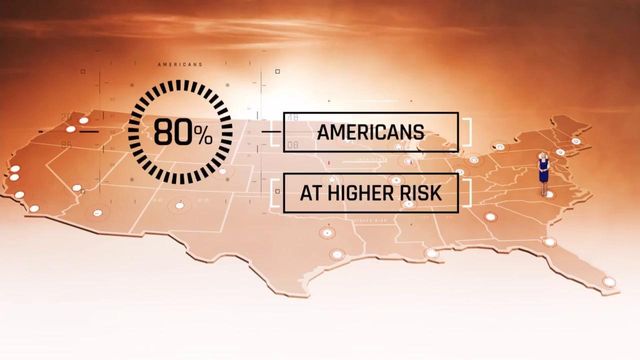Extreme heat may be the new normal
July has been the hottest month ever recorded globally, according to the World Meteorological Organization. Last month was the hottest June ever.
“Record-breaking temperatures are part of the trend of drastic increases in global temperatures,” Carlo Buontempo, director of the Copernicus Climate Change Service, said, adding that human-caused emissions are the “main driver” of rising temperatures. Copernicus is a climate data provider.
The southeastern U.S. has been warming about half a degree per decade, with temperatures in the Raleigh-Durham region increasing by nearly 6 degrees since 1970, according to data from Climate Central, a Princeton, N.J.-based research nonprofit.
The Raleigh-Durham area also has 16 more days above 95 degrees and 40 more “risky” heat days – annual days above the 90th percentile – than it did in 1970. That’s one of the most significant increases in the nation, according to data from the Applied Climate Information System, a data system managed by National Oceanic and Atmospheric Administration regional climate centers.

Heat waves are more dangerous when combined with humidity. A Climate Central analysis projects that heat waves are expected to quadruple in North Carolina by 2050.
It’s even hotter on what’s called “urban heat islands” – areas in cities with dense concentrations of pavement, buildings and other surfaces that absorb and retain heat.
Low-income neighborhoods are more likely to be in severe heat islands due to fewer heat-reducing amenities such as parks, yards, and trees, according to an Environmental Protection Agency review of several studies.
Some areas in the city of Raleigh are 19 degrees hotter than in nearby rural areas with natural ground cover and on average, city summers are about 2 degrees hotter than in rural areas.
More than 80% of Americans live in cities, according to 2020 U.S. Census data, putting hundreds of millions of people at higher risk during the hottest parts of the year.
As temperatures rise, so do the number of heat-related illnesses, hospital visits, and deaths. The National Weather Service and Environmental Protection Agency list excessive heat as the leading weather-related killer in the United States.
High temperatures can also increase air stagnation, when there is a buildup of air pollution in the atmosphere. The hottest days, particularly days over 90 degrees Fahrenheit, are associated with dangerous ozone pollution levels that can trigger asthma attacks, heart attacks, and other serious health impacts.

There is a very good chance one of the next five years will be the hottest on record, according to the World Meteorological Association.
United Nations scientists say the global average temperature will at least temporarily exceed an important warming threshold: the goal of the 2015 Paris Climate Agreement to limit the temperature increase to 2.7 degrees Fahrenheit above preindustrial levels.












